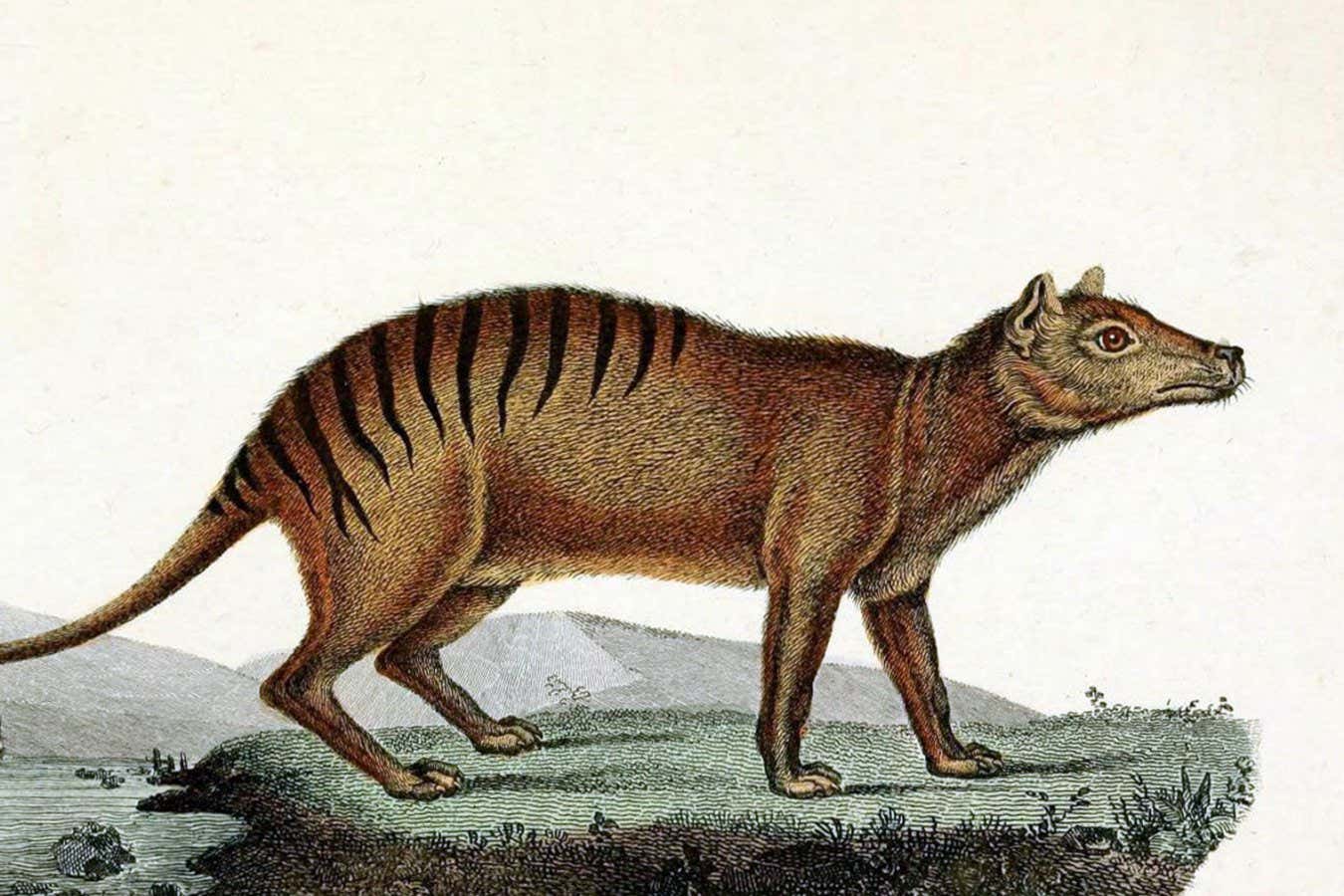A comparison of the thylacine’s genome to other marsupials has revealed that the creatures lost genetic diversity long before humans and dingoes arrived in Australia
By James Woodford
27 August 2025
Thylacines were once found throughout Australia and New Guinea
Robert Nickelsberg/Getty Images
The loss of crucial genes over millions of years before the arrival of humans in Australia may have left thylacines more vulnerable to extinction.
The thylacine, or Tasmanian tiger was the last survivor of a family of marsupials known as Thylacinidae that once lived throughout Australia and New Guinea.
Read more
Endangered skates saved from extinction by hatching in captivity
Advertisement
It was extinct on the Australian mainland by 2000 years ago, with hunting by humans and competition from dingoes thought to be major reasons for their decline. After Europeans arrived in Tasmania, the animals were persecuted by farmers and a government bounty, and the last specimen died in Hobart Zoo in 1936.
Nagarjun Vijay and Buddhabhushan Girish Salve at the Indian Institute of Science Education and Research Bhopal first became interested in the genome of the Tasmanian tiger while studying the genome of the Bengal tiger .
“We were seeing some parallels between the extinction of the thylacine with our own tiger,” says Vijay. “And there is a lot of impetus to conserve the tiger in India.”
